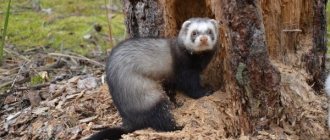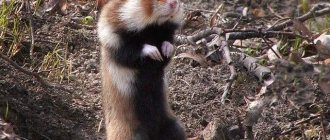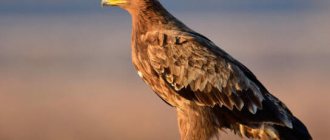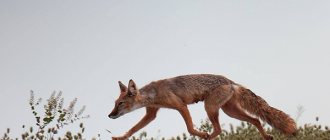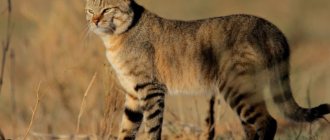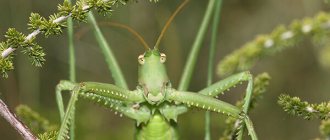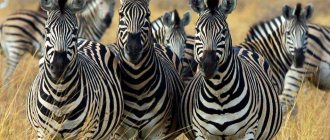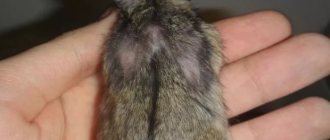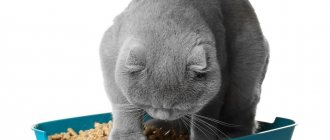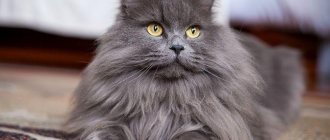Steppe ferret (furo, fretka) is considered the largest representative of its species. Most often found in Central and Western Europe, widespread in the Far East. The animal's homeland is considered to be New Zealand, from where it was brought to Eurasian territory. for extermination of domestic rodents. The animal has a bad reputation among farmers because it likes to raid chicken coops. To get a general idea of the predator, you must first give the animal a brief description.
Appearance of the steppe ferret
The animal is a member of the mustelidae family . It has short legs and an elongated body, allowing it to easily penetrate into burrows. An adult animal can reach 60 (cm) in length and weigh almost 2 (kg) . Males are traditionally larger than females and have a bushy tail. Moves by jumping and can overcome small water obstacles.
The fur of the steppe ferret is long, but not thick. The color can change greatly during molting and has certain characteristics depending on the habitat. The following description can be considered the most characteristic of animal fur:
- The tips of the hair are dark, and those near the body are lighter
- The darkest, almost black, are the paws, belly and tip of the tail.
- The animal's muzzle resembles a black mask
In some cases, among steppe ferrets there are completely white representatives. It has been established that the unusual color of the predator is caused by the absence in its body of melanin a, a high-molecular pigment that determines the color of fur in animals. White ferrets are even classified as a separate subspecies.
Numerous family of mustelids
In the scientific classification, the steppe ferret is called Mustela eversmanni. It belongs to the weasel family. That is, distant relatives of the animal are stoats, minks, solongoi, weasels and, in fact, martens. This small carnivorous mammal belongs to the genus of weasels and polecats. The second word of the scientific name of the animal - eversmanni - pays tribute to the Russian zoologist E. A. Eversman (1794-1860), who described this species. The closest relatives of the steppe inhabitant are the forest (Mustela putorius) and black-footed (Mustela nigripes) chori, as well as the ferret (Mustela putorius furo). They can mate with each other and produce viable offspring. Many hybrids have been bred by humans: for example, Honorik, obtained from a union with a mink. Although all species of ferrets have different habitats, they quickly adapt to new conditions. Thus, forest ferrets were brought to New Zealand to combat the growing rat population. As a result, adapted small predators now threaten the island's native fauna.
Habitat and habits
The polecat is widespread in the steppe zone, found on forest edges and in places where livestock graze. Rarely found in residential areas. Only a feeling of hunger can force an animal to approach its home. A description of its unique capabilities may include the following characteristics:
- The ferret adapts to food depending on where it lives. In the northern regions, rabbits and birds , and those who have settled in hot areas calmly adapt to a diet of lizards and large insects
- A flexible body and incredible mobility help the animal elude large enemies, and sharp claws and teeth allow it to ensure victory over gophers and even foxes
- Dense secondary hair maintains a stable body temperature for the animal, provides protection in cold weather and from the scorching rays of the sun.
- The steppe predator is smart and stores food for the winter. During the cold season he is not afraid of hunger
- The ferret leads a predominantly solitary existence. Occasionally, with an increase in numbers in limited areas, accumulations of furo may be observed. The presence of group discipline and subordination by strength and seniority is noted in the pack
Behavior
The animals usually use abandoned burrows of hamsters (Cricetinae), pikas (Ochotonidae) and ground squirrels (Spermophilus) for their shelters. Sometimes they kick out the owners and occupy their living space. Ferrets can make their nests in hollow trees, piles of brushwood, haystacks, rock formations and rock crevices. Very rarely they dig holes on their own to a depth of 50 cm. The animals are not interested in their improvement and limit themselves only to clearing the entrance.
The home range of the steppe ferret often has the shape of a circle within a radius of 3-5 km from its shelter and an area of 18-32 square meters. km. When there is a shortage of food, the predator leaves its hunting grounds without much regret and migrates to richer lands following small rodents, mainly gophers. Migrations most often occur in winter, when its usual hunting trophies go into hibernation. Representatives of this species do not defend the borders of their possessions and do not experience aggression towards strangers.
The ferret goes hunting at dusk or at night. During daylight hours, only weak or young animals hunt.
In addition to rodents, the ferret, under favorable circumstances, eats birds, snakes, amphibians and invertebrate animals. Individuals living near bodies of water hunt water rats (Arvicola amphibius) and fish. They can swim and dive perfectly and move mainly by skipping.
Cases of their penetration into farmsteads are extremely rare. Animals avoid human proximity and attack poultry only in cases of extreme hunger.
The meat diet is periodically supplemented with food of plant origin. The animals readily feast on fruits, berries and grapes. They do not disdain carrion and, if possible, store small reserves of food for a rainy day; in winter they are able to pursue prey under the snow cover. The daily consumption rate corresponds to 150 g of food.
Feeding of the steppe predator
The animal prefers night hunting. The animal goes fishing in the evening twilight, and during the day prefers to sleep in a hole. Ferrets are helped by their natural agility and night vision to find food in the dark. Successful hunting of a predator is facilitated by high speed qualities and the ability to tear apart the holes of the pursued prey. It will be interesting to find out what the steppe ferret eats.
The food of a predator is not very diverse. The description of the animal's menu comes down to one meat food . The ferret's sharp teeth can catch: hamsters, mice, rats, birds, bird eggs, lizards and even fish. Typically, the ferret lies in wait for the victim at her hiding place and attacks as soon as she sees the prey.
In its natural environment, an animal may refuse to eat plant foods. Due to the absence of a cecum, its absorption by the animal’s body is poor.
Caring for ferrets
Breeders often assure a potential furo buyer that minimal care is required for the animals, since ferrets are omnivores. This is not entirely true. The fact is that ferrets, including ferrets, are obligate predators. This means that their food can be animals comparable in size to them. In the wild, ferrets do not eat beef or pork. But this does not mean at all that the owner of the ferret should catch gophers to feed his pet. Domestic ferrets accept poultry and rabbit meat well. From time to time they can be given veal, lamb and offal. You need to be careful with fish. Ferrets can only eat flounder, horse mackerel, haddock, mackerel, cod and trout. The owner of a furo (especially an albino) should pay attention to the health of his pet. In addition to rabies and distemper, there are also specific diseases of ferrets. These are viral plasmacytosis (Aleutian disease), insulinoma and hyperestrogenism. Ferrets also become infected with human influenza.
Animal reproduction and life expectancy
The steppe polecat reaches sexual maturity by the end of the first year of life. The breeding season of the animal begins in early spring and lasts throughout the summer . There are no mating rituals between males and females, but they mate very aggressively. Animals often injure each other.
The birth takes place in a hole taken from some victim. The animals themselves do not like to dig holes, but they always arrange them to their own taste. This could be widening the passage, insulating the hole with grass and leaves. Gestation of the cubs takes approximately 40 days . Animals are born blind, hairless and completely helpless. The cubs' eyes open after about a month, after which the mother begins to switch them to a meat diet.
In nature, the polecat lives only 3-4 years . The high mortality rate of puppies is one of the reasons why the steppe ferret is listed in the Red Book. Captivity, with a well-chosen diet and timely veterinary care, allows animals to live up to 8 years .
Reproduction
In regions where they live together, steppe and forest ferrets often interbreed. Therefore, black (dark) animals are also found in populations. Although the number of chromosomes in the two species is different: thirty-eight for the inhabitants of the steppes, forty for the inhabitants of the forests. Outside the breeding season, the steppe ferret keeps to itself, but does not mark or guard its territory. If two same-sex individuals meet, they do not show aggression towards each other. But the males fight for the female, biting mercilessly and squealing loudly. The ladies look a little smaller than the gentlemen, but they are almost half lighter in weight: two kilograms versus 1,200. For childbirth, females expand and equip other people's burrows, lining them with hay, feathers, and down. Less often, they dig their homes themselves. They may choose a haystack or a low-lying tree hollow for a burrow. The father takes part in raising the offspring. If the cubs die for any reason, the female is able to interbreed again after seven to twenty days. Although usually the mating season occurs at the end of winter.
Survival in natural conditions
The main land enemies of the ferret are wolves and foxes . From the air they face danger in the form of eagles, hawks and owls . Ferrets have excellent physical characteristics; it is not difficult for them to elude enemies. In addition, the animal’s special anal glands emit an unpleasant odor, which allows them to lose track. But the enemies do not pose a serious threat to the existence of the animal. Other factors do this.
Unfortunately, the Red Book is an interesting, but at the same time a little sad publication. After all, it contains descriptions of rare and endangered animals. The Amur steppe polecat did not escape this fate . At the end of the last century, the Red Book was replenished with a representative of the mustelid family.
Relationships with people[edit]
The steppe ferret is of great economic value to the peoples of the former Soviet Union. It kills large numbers of rodents that are harmful to agriculture and spread disease; One steppe ferret can destroy at least 200 ground squirrels per year or 1,500 mouse-like rodents in winter alone. This is also very important for the fur trade of the former Soviet Union. Takes first place among livestock specialists in Kazakhstan and other regions. However, the number of the steppe ferret decreased markedly in 1926–1929 and 1956–1959. This decline was associated with changes in steppe landscapes and a decrease in the natural prey of the species due to the use of chemical methods to control rodent populations, plowing of virgin lands and changes in agrochemical methods. Catching the steppe ferret is quite simple. It is mainly caught by jaw traps located near residential burrows. [23]
Taming a steppe animal
There are many people who want to keep a ferret at home . The animal adapts well to captivity, but requires specific care . Chicken, turkey, and offal are suitable as the main menu. It is allowed to diversify the animal's food with dry food. Sometimes the animal is offered fruits and vegetables: apples, pears, zucchini.
Fresh water is poured into the animal’s bowl; it must be updated daily. Food should be given in small portions. The ferret is accustomed to stocking up on food for future use, which risks poisoning. A small pet needs its own territory, but it cannot be kept in a cage all the time. The ferret is an active creature and may need some space from time to time.
The animal’s body is designed in such a way that during a prolonged estrus, during the rutting period, it can die. Swelling of the loop may often be observed . So, if your pet does not have a mate at home, it should be sterilized. The animal may also require routine vaccinations.
It must be remembered that the steppe ferret is a predatory animal , so it can pose a danger to small pets. Instinct will definitely lead him to hunt. A ferret can establish peaceful coexistence with a cat or small dog . And at the same time, a nimble mischief can turn around a flower bed or climb to sleep at the bottom of a trash can.
Even an ordinary photo of a furry animal can melt the hardest heart. We can only hope that the cute animal will not turn into an exhibit of private menageries, but will continue to remain one of the brightest representatives of the fauna in many parts of the globe.
Fretka, or furo
It is reliably known that Mustela putorius furo was bred from the dark forest polecat. They have the same number of chromosomes, they produce completely healthy offspring capable of procreation. But albino individuals were often taken for domestication. Therefore, another name was assigned to the furo - white ferret. Not everyone liked the red eyes and poor health of albinos. To strengthen it, ferrets were sometimes crossed with wild forest relatives, so the fur color of domestic animals can be different: sable, mother-of-pearl, fawn, golden. In terms of intelligence, they are close to cats. But they not only respond to a name, but are also able to walk on a leash and carry out various commands, like dogs. Baby ferrets are very playful and active. The animal becomes attached to its owner, trusting other people.
Description
The steppe ferret differs from the European common ferret (Mustela putorius) by having a white rather than black head color, a more massive skull and smaller size. There is pronounced sexual dimorphism. Males are larger than females. Their body length is 37-56 cm, and their weight is up to 2 kg. The body length of females is 29-52 cm, and the maximum weight is 1.3 kg. The long tail accounts for about a third of the body.
The body is thin, long, elongated, with short limbs. The fur has a small yellow down and black guard hairs. The belly and paws are black. The muzzle is decorated with a dark mask. The front paws have sharp claws. Vibrissae dark. The rounded ears, set on the sides of the head, have a white edging of the auricles. There are white spots above the eyes.
The life expectancy of the steppe ferret in natural conditions is about 6 years.


